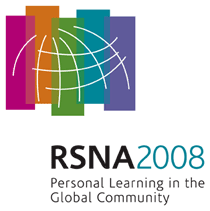
Abstract Archives of the RSNA, 2008
LL-MK4325-B09
Serial Correlation between Ultrasonographic and Pathologic Findings of Intramuscular Hemorrhage in the Experimental Rabbits
Scientific Posters
Presented on November 30, 2008
Presented as part of LL-MK-B: Musculoskeletal
Kyoung Lan Ko MD, Presenter: Nothing to Disclose
Min Seon Bae MD, Abstract Co-Author: Nothing to Disclose
Joon Ho Choi MD, Abstract Co-Author: Nothing to Disclose
Dong Ho Lee MD, Abstract Co-Author: Nothing to Disclose
Ji Seon Park MD, PhD, Abstract Co-Author: Nothing to Disclose
Kyung Nam Ryu MD, PhD, Abstract Co-Author: Nothing to Disclose
Yong Koo Park MD, PhD, Abstract Co-Author: Nothing to Disclose
Wook Jin, Abstract Co-Author: Nothing to Disclose
et al, Abstract Co-Author: Nothing to Disclose
To demonstrate the serial ultrasonographic and pathologic findings of intramuscular hemorrhage in experimental rabbit models and to correlate between them at each follow-up period.
Intramuscular hemorrhage was artificially made by autologous blood injection into left thigh muscles immediately after direct cardiac puncture in nine rabbits. Ultrasonography(US) using high-frequency linear transducer(17MHz) was performed before and immediately after intramuscular hemorrhage in all rabbits. And, each last follow-up US images scheduled for 1 day, 4 days, 7 days, 10 days, 2 weeks, 3 weeks, and 4 weeks after intramuscular hemorrhage were obtained in seven rabbits. After that, pathologic specimens of thigh muscles were obtained for the correlation with the US findings on each date.
US performed immediately after intramuscular hemorrhage showed two patterns; 6 cases of ill-defined, hyperechoic lesion along the swollen muscle bundles and 3 cases of hyperechoic muscle swelling with echogenic fluid collections between epimysium and muscle bundle or within muscle bundle. Serial follow-up US of 4 day, 7 day, 10 day, 2 weeks , and 3 weeks showed markedly decreased hyperechoic muscle thickening with small hypoechoic nodular lesions and occurrence of hyperechoic lines or dots, consistent with decreased volume of hemorrhage with microabscess formation and development of calcifications, fibrosis and hemosiderin deposits on pathologic specimens. Fourth weeks’ follow-up US showing normal finding was correlated with normal gross pathologic findings.
US findings of intramuscular hemorrhage reveal high correlation with the pathologic specimens at each date. Therefore, high-resolution US can be very helpful modality to diagnose and evaluate the follow-up of intramuscular hemorrhage.
.
Ko, K,
Bae, M,
Choi, J,
Lee, D,
Park, J,
Ryu, K,
Park, Y,
Jin, W,
et al, ,
Serial Correlation between Ultrasonographic and Pathologic Findings of Intramuscular Hemorrhage in the Experimental Rabbits. Radiological Society of North America 2008 Scientific Assembly and Annual Meeting, February 18 - February 20, 2008 ,Chicago IL.
http://archive.rsna.org/2008/6015661.html

